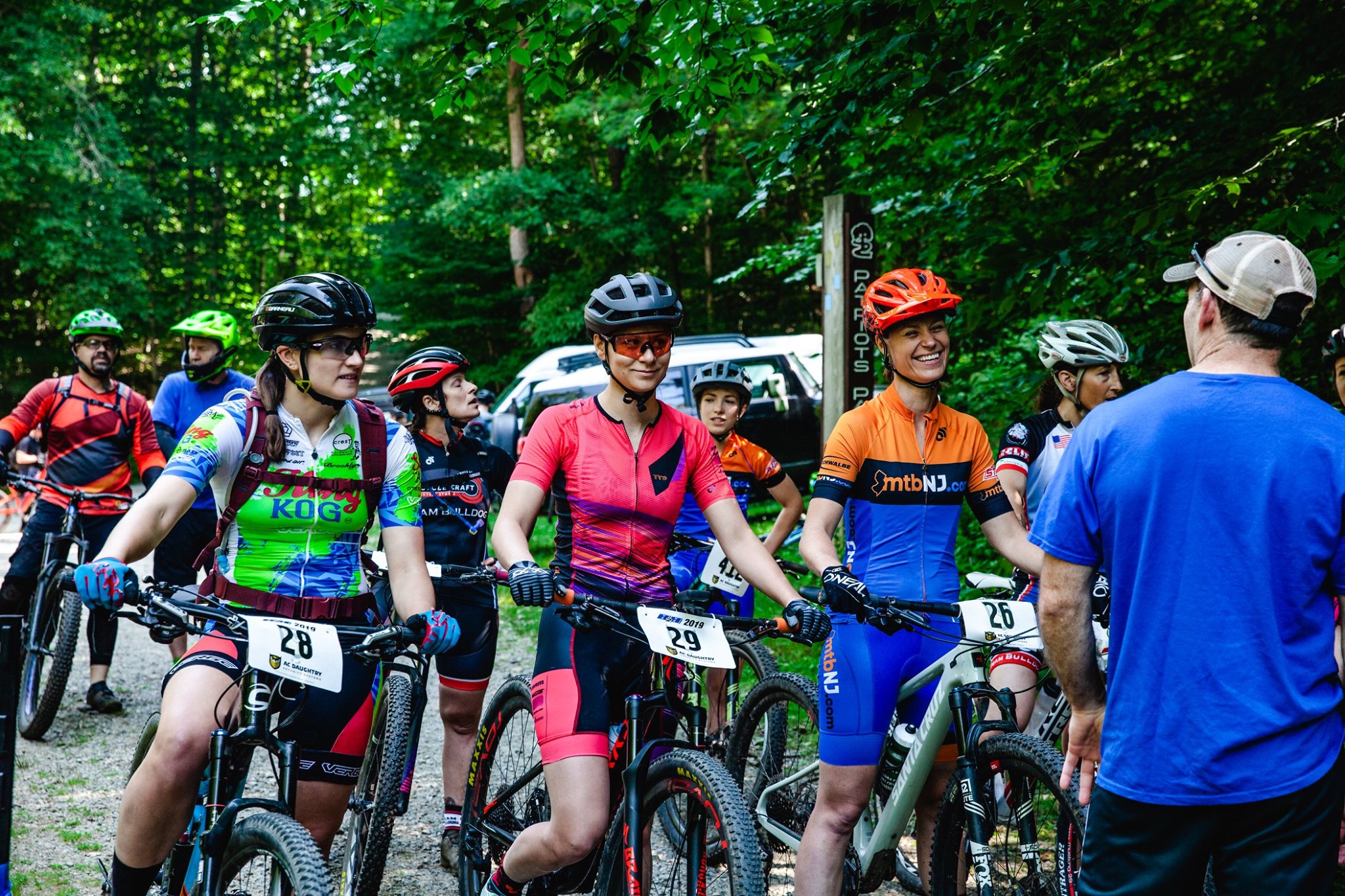Earlier this year, a young female mountain biker shared her frustrations about her experience at a local cross country mountain bike race. Her story, in 2021, echoed so many of my own from the last DECADE of racing bikes. It seems that many promoters have some major blind spots for treating women equally to men. I’d like to try to bring some of those issues to light.
Now, I want to be clear here. There have been some major strides in awareness and a push for events to be more inclusive and respectful of women. And that’s awesome. However, women today are still experiencing lots of subtle, and sometimes not so subtle, moments of disregard and disrespect at cycling events. The good news is that there are a lot of simple, fundamental actions that can be put into practice immediately.
When I decided to write this article, I reached out to a dozen different women’s cycling groups for input – road cycling, mountain biking, free riding, with local, national and international scopes and I received HUNDREDS of responses, with many of the same issues occurring on all levels of racing, all over the world.
The following are some common threads and how a race promoter can handle or address those issues. This is by no mean exhaustive, but I hope it’s helpful.
1. Marketing
Include images of women in you’re marketing materials – that’s anything from social media posts, event banners, post-event articles & write ups, or video clips. Look at what you’re currently posting, printing and publishing. Analyze how often you’re displaying images of women vs images of men. Even that up by deliberately including & featuring women.
2. Access to Toilets
Nothing says, ‘We don’t care about your needs’ more than not providing restroom access at a race or event. That may require CONFIRMING a public restroom will be unlocked for the event, then CHECKING that indeed the park/facility unlocked it. If it is brought to your attention that the restroom, which your event should have access to as per the permit you paid for, is not in fact available to participants, be outraged & take action.
At a minimum, there should be toilets at the start of the race. Major bonus points for any long format course that offers porta-potties at a strategic location along the course. Women literally cheer when they see a porta-potty, I’m not joking. To put a finer point on this, on average, women menstruate 1 out of every 4 weeks. That means that at any given event, you can expect 25% of the female participants are dealing with their menstrual cycle. Peeing in the woods isn’t going to cut it.
3. Equal Prizes & Payouts
It’s simple – EQUAL PAYOUT. Period. Full stop.
Don’t place participation requirements on the women’s categories (I’ll explain why that’s absurd in point #7). This goes for swag prizes too – offer the same level of swag items to both the men’s & women’s categories. Ideally, the same exact items to all 1st, 2nd, 3rd place winners regardless of gender.
Don’t give women men’s clothing. Just don’t. It doesn’t matter if it’s high quality and expensive. Consider this, would giving a man a piece of women’s clothing be well received? Women feel it’s just as inappropriate.
4. Equal Treatment During Award Ceremonies
It’s awesome to call out race times during the podium ceremony. If you choose to do so, do it for ALL the categories. If you call it out for the first place winner only, or for only the pro categories, that’s fine, but treat the men and women equally in equivalent categories.
Intermingle the women’s & men’s categories during the award presentations. This is especially important if the prizes include choosing from a swag table. It’s way to common to call out ALL the mens’ & boys’ categories first. They get choice of swag on the ‘choose your own table’ and the women are left to the very end with everything picked over.
It’s a much better scenario to have equal prizes reserved for the podium positions and then raffle off or give away the leftover swag in another way like a crowd toss, to segment winners, or in some other creative manner.
5. Equal Distance / Duration
Either distance or duration should be equal for both genders. The selected metric will vary depending on the discipline and course. For example, duration is the main focus for cross country, cyclocross and criterium races, while distance should be equal for marathon, downhill, freeride, enduro and road disciplines. Not sure what your discipline should do? See point #9
6. Equal Categories & Starts
I’m sure this will be a contentious point, but ideally, offer the same categories for women as you offer for men.
Women are discouraged from participating in an event if they are forced to race against women 2-3x younger or older them themselves. They want to race amongst their peers, and they want to have a choice.
At the very least I would suggest having a juniors category, an open category and a master category in each level of racing. Not sure if this point is relevant to your discipline? See point #9.
Don’t combine women’s classes, either amongst themselves or with other categories, at the event unless you speak to the women first. If there is 100% agreement of participants – great, make a change, if not, respect their choice to start and race against their competitors.
Start the relevant men’s and women’s categories at similar times. Don’t push the women onto their own day, after or before the men’s racing or at other undesirable times. Amateur categories should get the less desirable & attended time slots.
If you expect the event to sell out, reserve a segment of entries for the women’s categories.
7. Figure out the Math
I heard over and over again women were subjected to arbitrary math rules. This applied to everything from equal payout, to qualifying for race heats, to team qualifications to invitational events.
Let me give you some examples.
1. Payout Qualifiers: Some local XC races require the pro women’s class to have 10 participants in order to receive the same payout as the Pro Men’s Class. Two issues with this one…
First, individual categories do not fund their class payouts. Payout for the Pros is funded by the amateur classes, so there is no reason to place an arbitrary requirement on the Women’s Pro Class.
Second, the targets are usually grossly unreasonable. Let’s say a local XC mountain bike race typically gets 5 pro women, on average, registering for the event. The typical attendance would need to DOUBLE for the women to receive full payout. Would any promoter EVER require the Pro Men’s class to DOUBLE their participants from one year to the next before paying out the full prize money? Nope. Never.
2. Qualifying Rates: In some UK collegiate downhill races, only 10 females can qualify compared to 100 men. The low qualifier rate and rules about belonging to teams impacts scoring so that women are typically awarded only a gold medal and no silver or bronze while the men receive medals for all 3 places.
What’s the tip here? Don’t set arbitrary numbers. Figure out the math, look at the historical participation data and the event’s participation goals before setting up the rules.
8. Respectful Announcers
Race announcers should be vetted for professionalism before being handed a mic. Comments about body size, hair color, strip clubs, etc.. have no place at a cycling event in any way shape or form. (You know who you are)
9. Just Ask!
The single most important tip I can offer is this: ASK WOMEN FOR FEEDBACK & INPUT.
If you want to know how to improve your specific event and event experience, ASK THE WOMEN attending, and those who have attended in the past. How was their experience? What could be improved? Why didn’t you come back? Was this change better or worse… ? Would you prefer option 1 or option 2?
Many women have experiences at events that are less than stellar – but they tend to keep it to themselves because no on wants to be a ‘complainer’. But if you seek feedback from the women attending your current & past events, I guarantee they will have advice, suggestions & insight on how to improve the experience.
Small Steps
I have been involved in bike racing on the participant, race promoter, and series promoter level. I have raced grassroot events and local series, as well as many regional and national events. I’ve participated in road races, criteriums, time trials, XC, cyclocross, enduro, short track and endurance events. I’ve seen race promotion from many angles, in many disciplines and I’m often asked the same question, “Why aren’t more women participating?”
I don’t have a concise answer to that question, but I am trying to chip away at the issues contributing to low female participation. I hope this helps.



Leave a Reply to Erin Haskell Cancel reply